
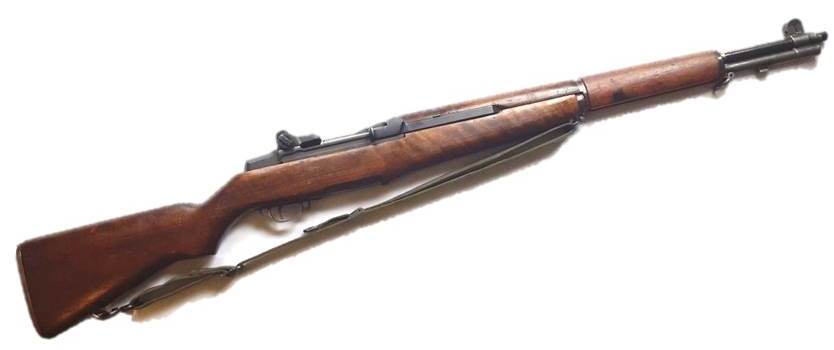
M1 Garand, the standard US service rifle of WWII and the Korean Conflict. It was adopted in the late 1930s; this semi-automatic 30 caliber weapon was fed by an 8-round block clip. This example was made by Springfield with a receiver from mid-1943 and a barrel from 1944. It features a late-WWII green canvas sling, which would replace the leather models used since World War I.

Remington 03A3 rifle. This was an improvement on the 1903 Springfield rifle that served from WWI-WWII, in that the sights were simplified and set on the back of the receiver instead of forward of the chamber. This example dates from late 1943. 03A3 rifles were known for their accuracy and served in every theater of the war.

.30 cal. M1 Carbine. This fired a lighter cartridge than the Garand and was lighter. This example is an Inland from late 1944 and one of the first to feature an adjustable rear sight.
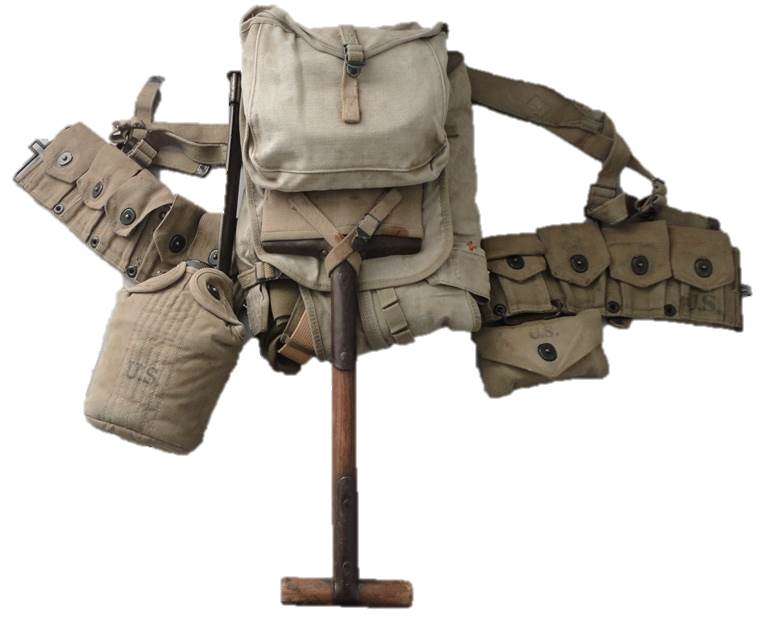
A typical infantryman's load. The pack contains personal items inside and has a mess kit "meat can" pouch, shovel, and bayonet attached. The pack is hooked to a cartridge belt, which has canteen and first aid kit attached.
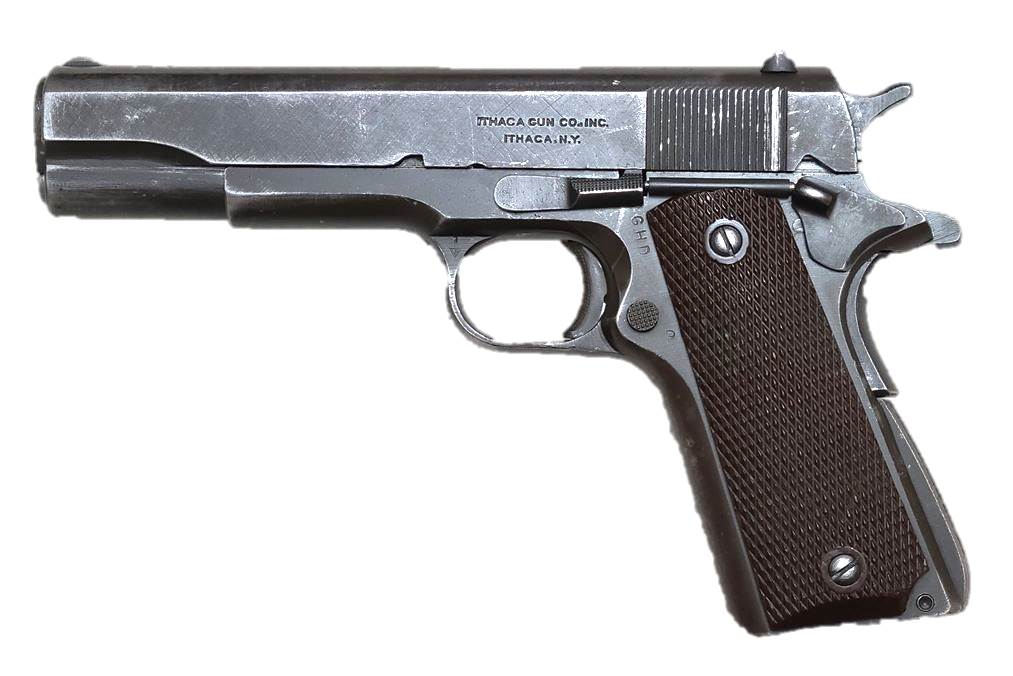
The 1911A1 pistol was the standard sidearm in WWII and for decades afterward. It was chambered in .45 cal and held seven rounds in the magazine. The 1911 first saw service in World War I and had some features upgraded in the 1920s to become the A1. This example was made in 1945.
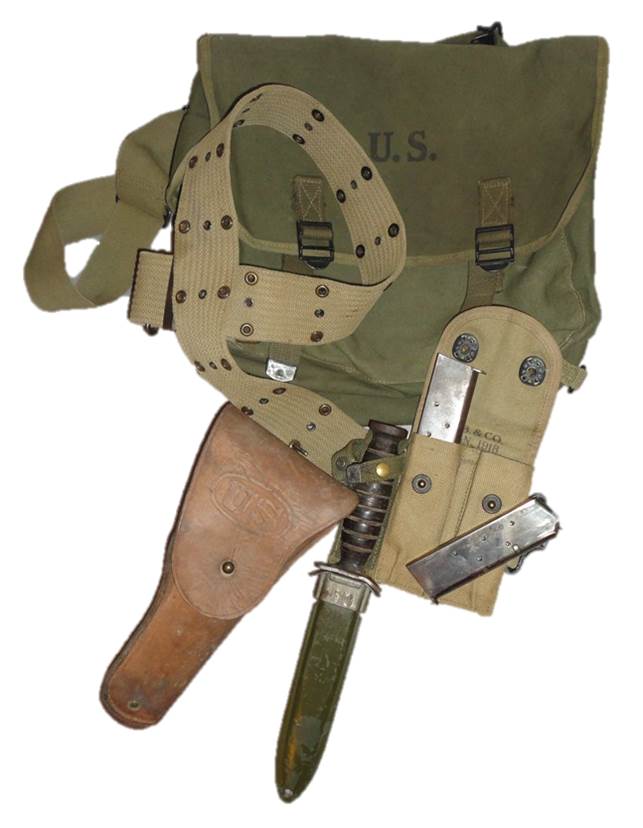
A small selection of officer's equipment: Musette bag, pistol belt with holster, M3 knife, and magazines for the 1911 pistol.

A very common feature in Boot Camp: the training rifle! Before firearms were issued, recruits needed to learn how to drill and operate them safely. This is a Parris-Dunn training rifle, closely resembling the 1903 Springfield rifle, made under contract for the United States Navy in WWII. The bolt action operates and it could be fitted with a bayonet.
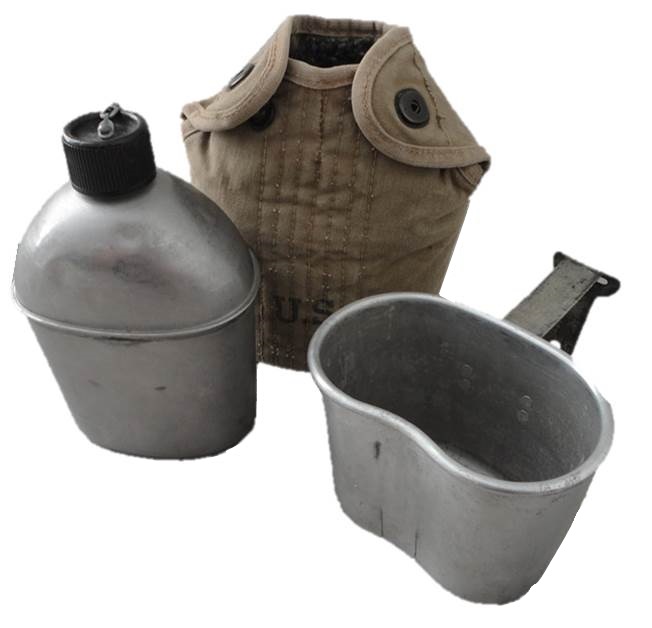
Canteen, cover, and cup.
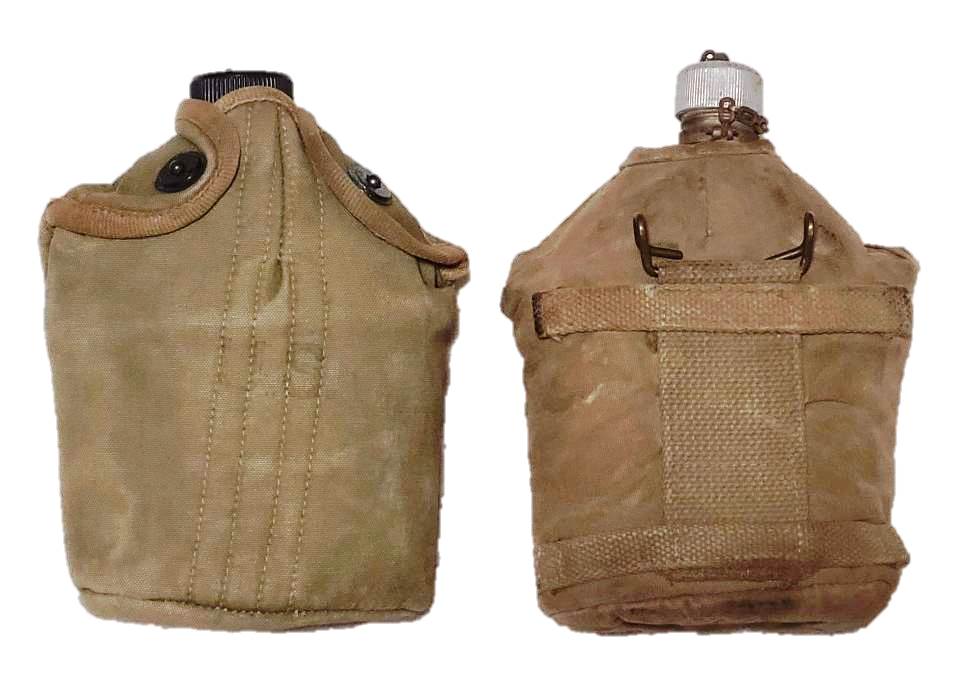
Two WWII canteen cover variations - a British-made example on the left, and a reinforced cavalry version on the right.
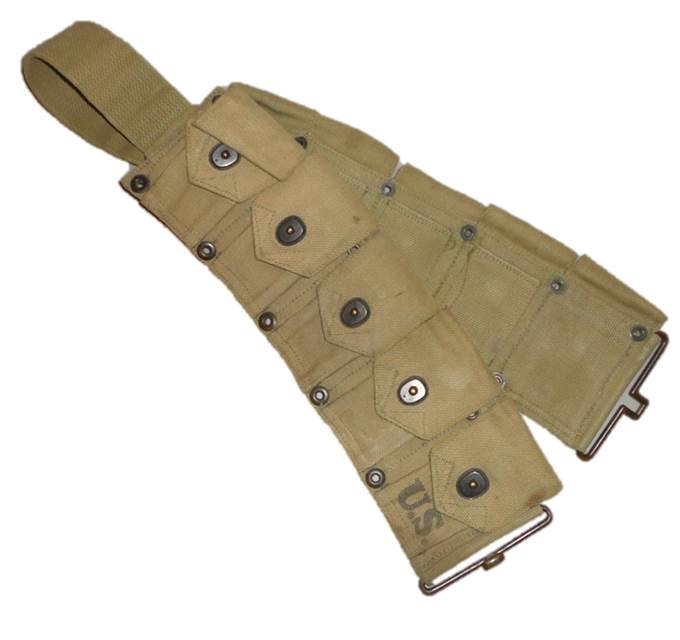
Early war M1923 cartridge belt, as used with the Springfield and Garand rifles. Canteens, medical pouches, and other equipment could be attached with hooks to the lower eyelets. Each pouch would contain one eight-round clip of bullets for the M1 Garand or ten rounds for the Springfield rifle.
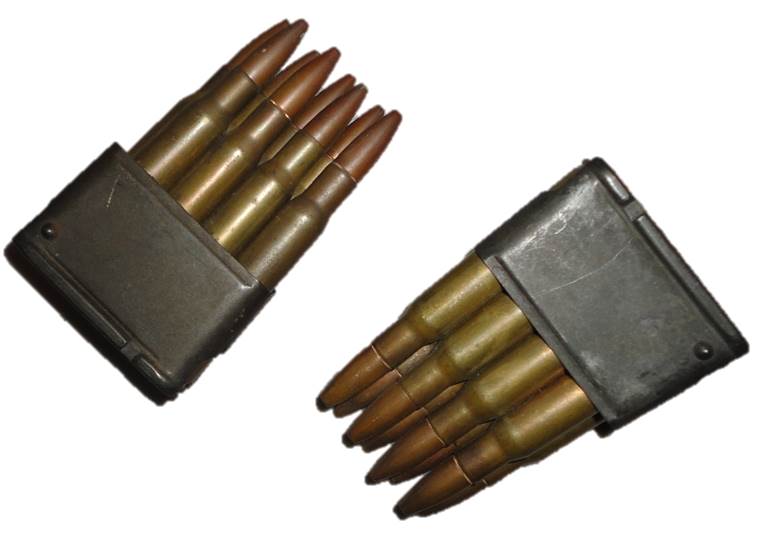
8-round clips of .30-06 bullets for the M1 Garand, the main rifle used by US forces in WWII.
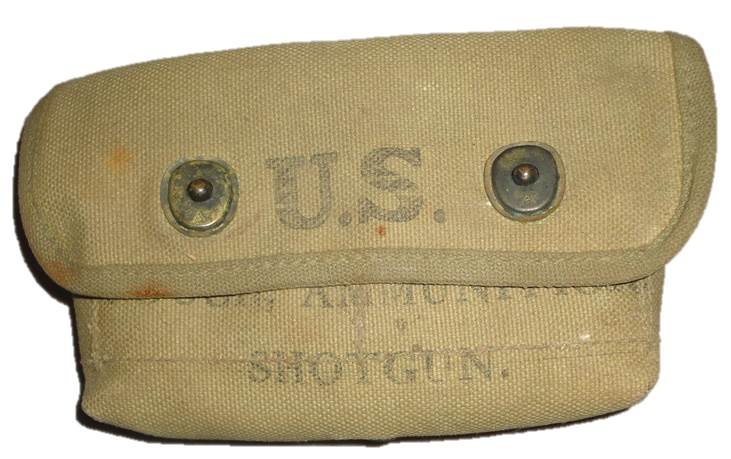
Pouch for carrying shotgun shells. Few soldiers carried shotguns into combat, but they were frequently used for guard duty and prisoner escort.
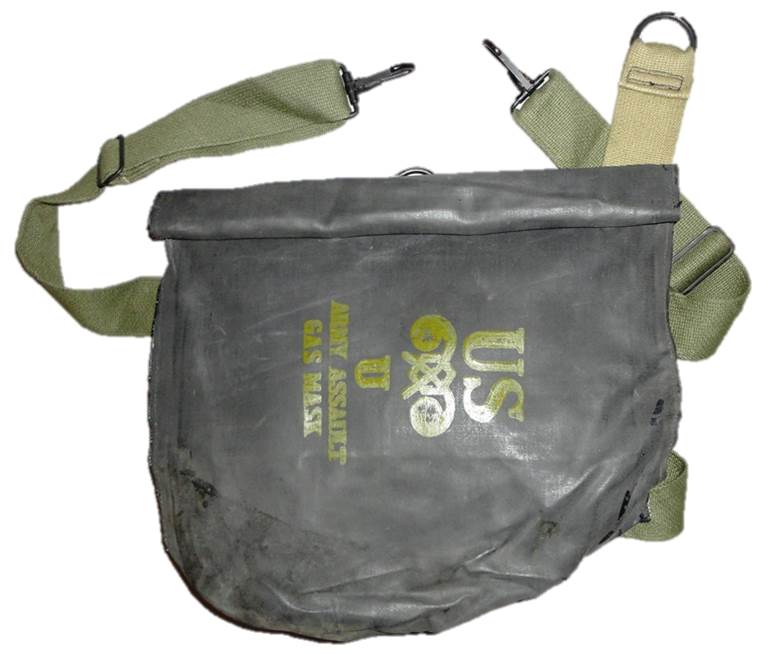
Waterproof pouch for the Assault Gas Mask. This was only used on D-Day as it was believed the Germans might use poison gas against the soldiers. Most were discarded soon after arriving on the beach.
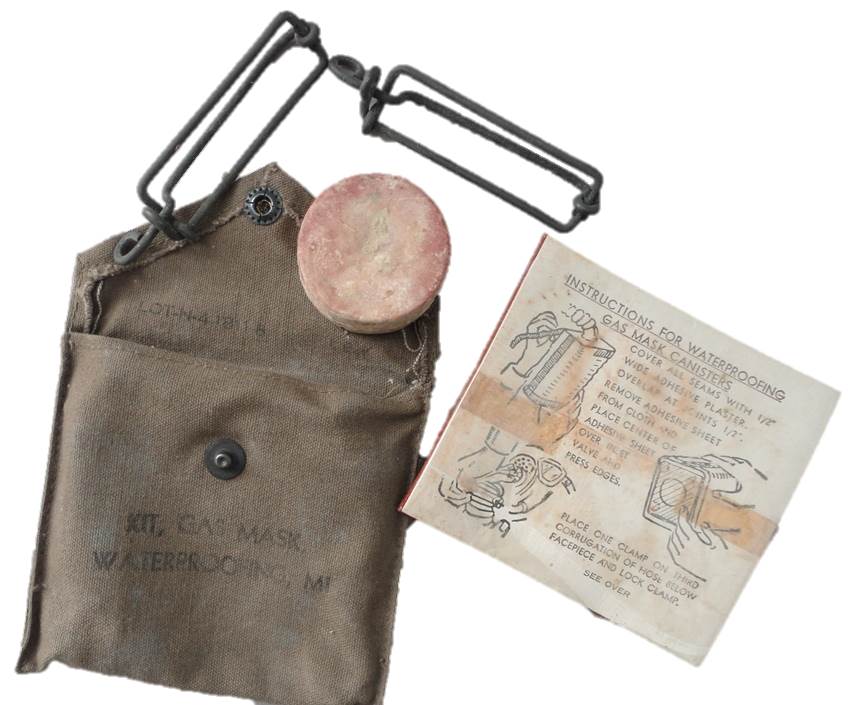
A gas mask waterproofing kit. These were used to make sure masks did not have leaks.

Goggles were used by soldiers, sailors, and aviators for a wide variety of assignments. The top pair is made of rubber and produced by Polaroid with interchangeable lenses. The bottom pair is an early set by Resistal with metal frame and rubber mask--this model is commonly attributed to use by tankers and aviators.
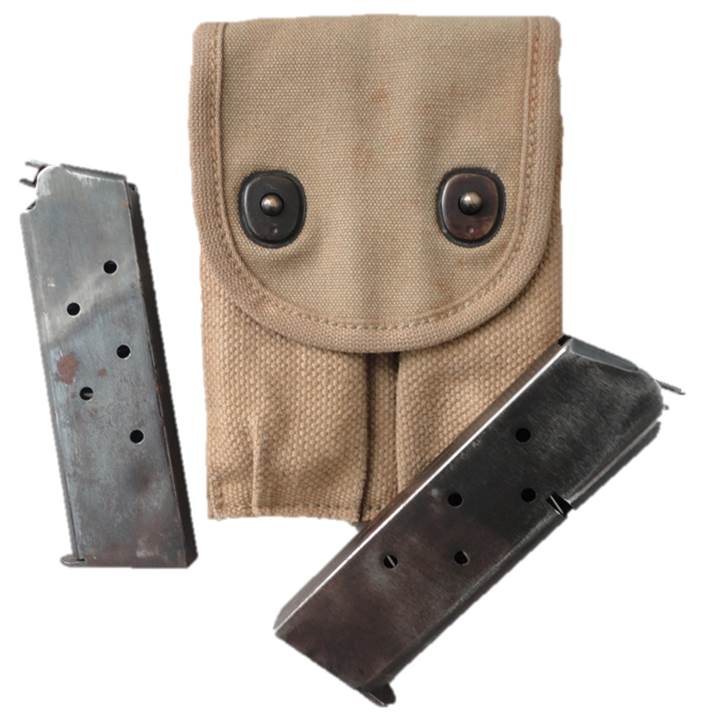
Magazines and pouch for the M1911 .45 caliber pistol.
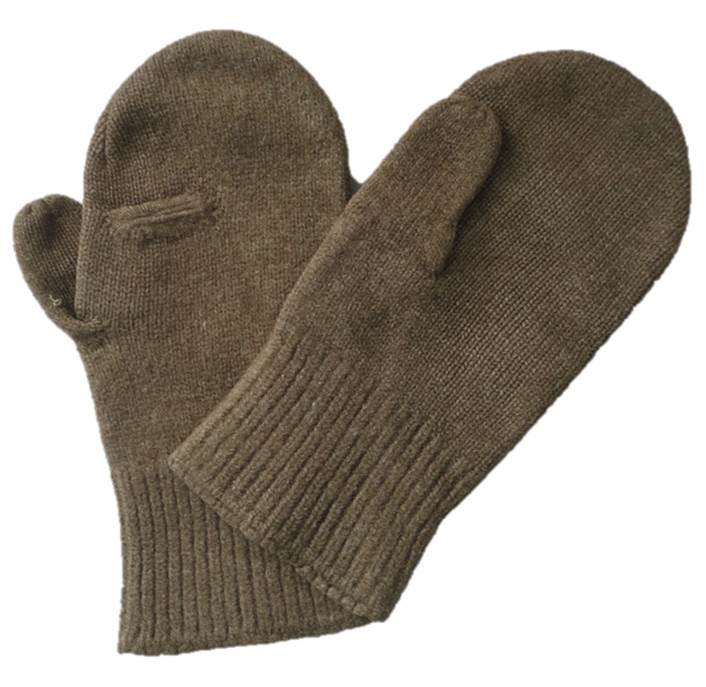
Wool mittens for cold weather. These have had their "trigger fingers" removed and were sewn shut.
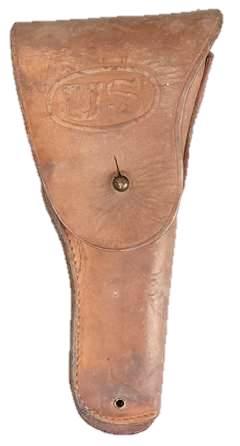
Standard m1916 leather holster for the .45 pistol. These were worn hooked onto web belts and generally carried on the right hip.
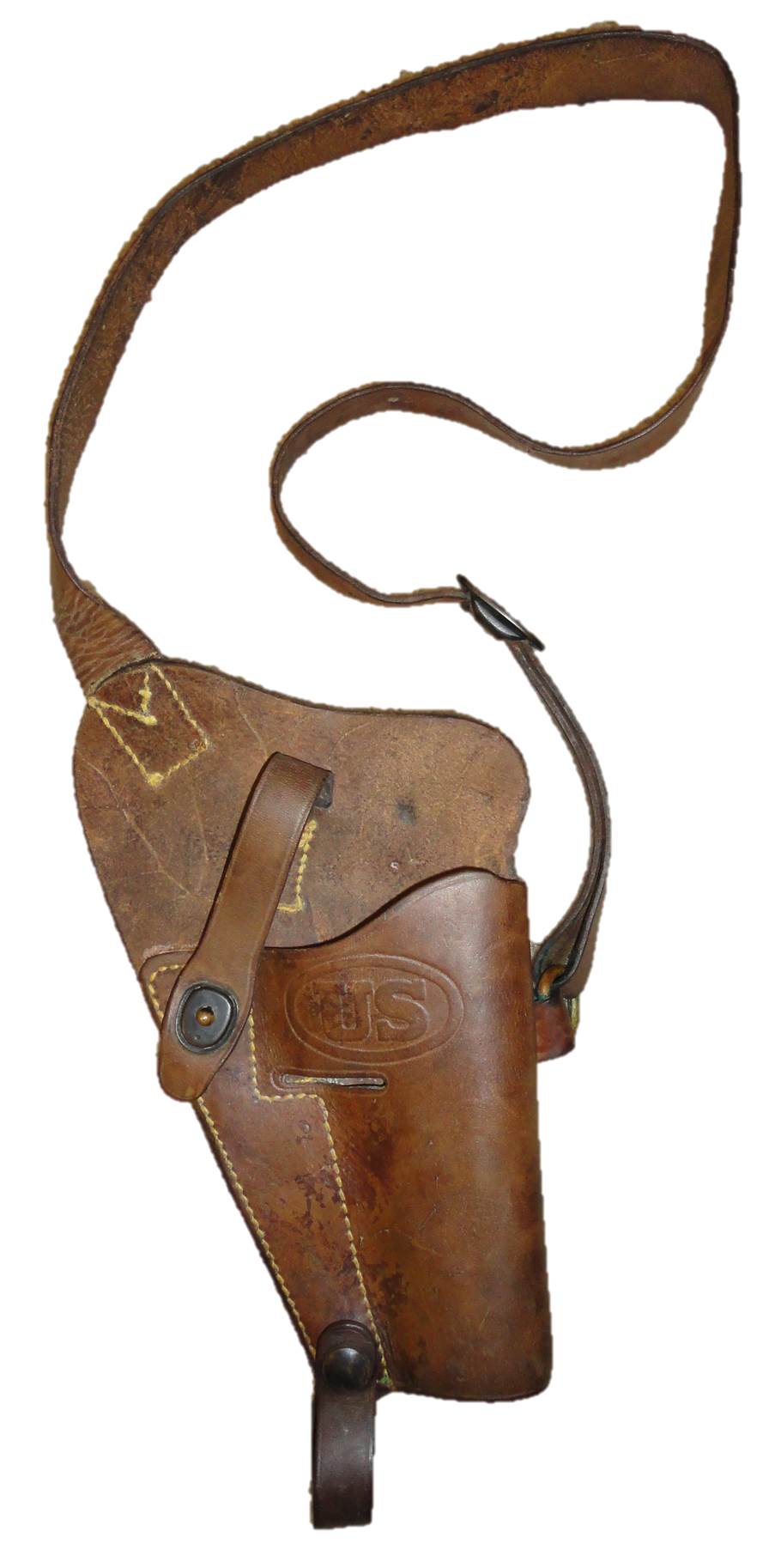
M3 leather shoulder holster for a .45 pistol. These were popular with aviators, officers and tank crew since a belt was not needed to support the holster.
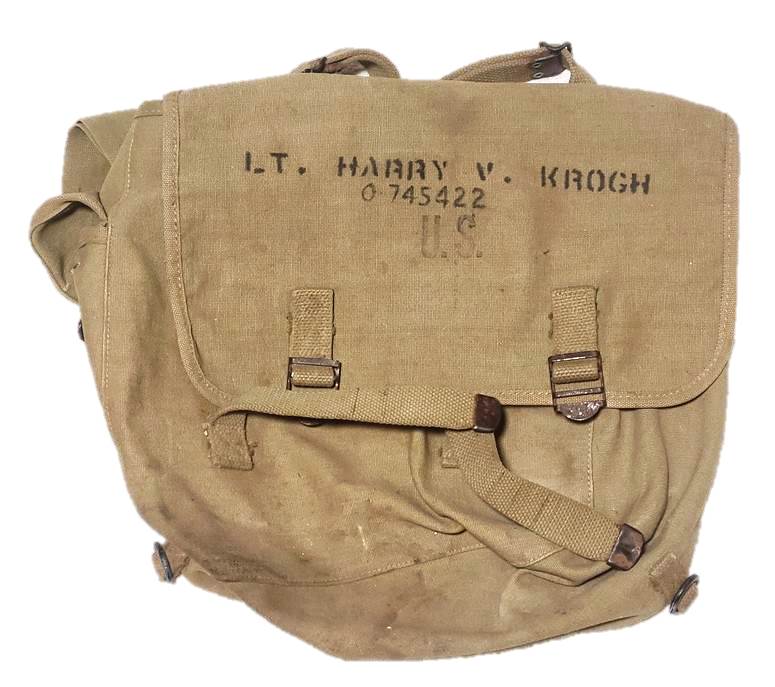
M36 musette bag, identified to a Kenosha Air Corps veteran who piloted P-38s in the Pacific
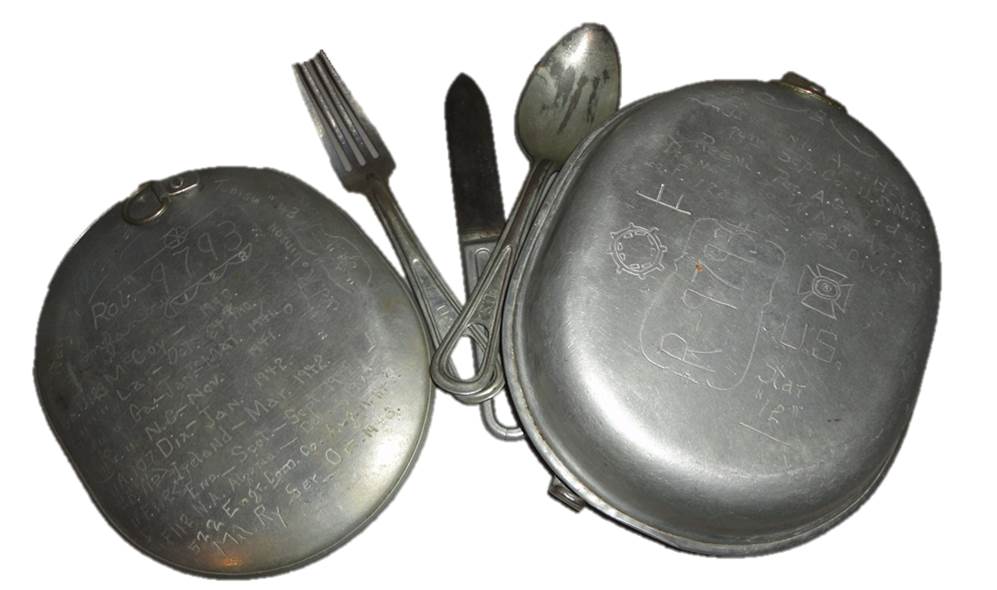
Mess kit and utensils, with graffiti by a Wisconsin soldier who served in North Africa and Europe on transport railroads. Dull periods of transport and waiting often led to this type of graffiti.
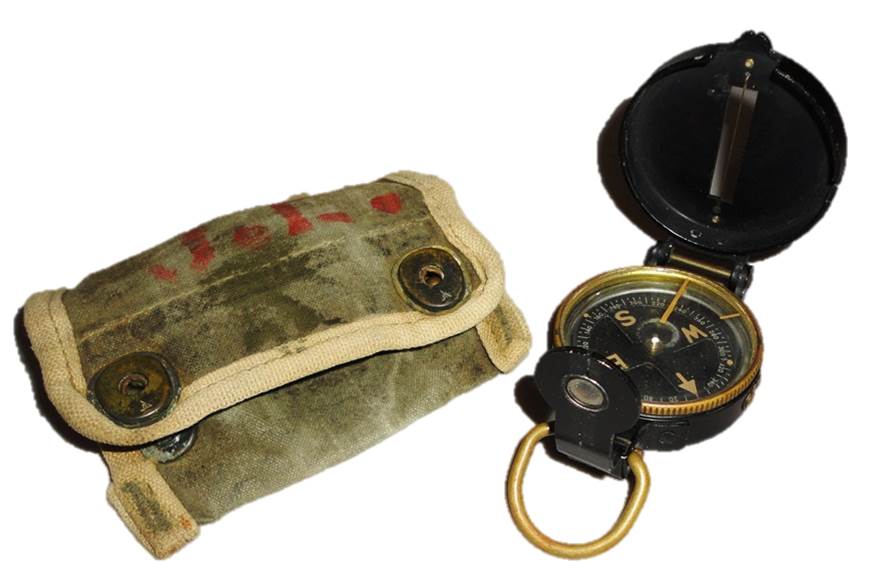
Lensatic compass and pouch as issued to officers. The pouch was waterproofed to protect the compass and worn on the belt.
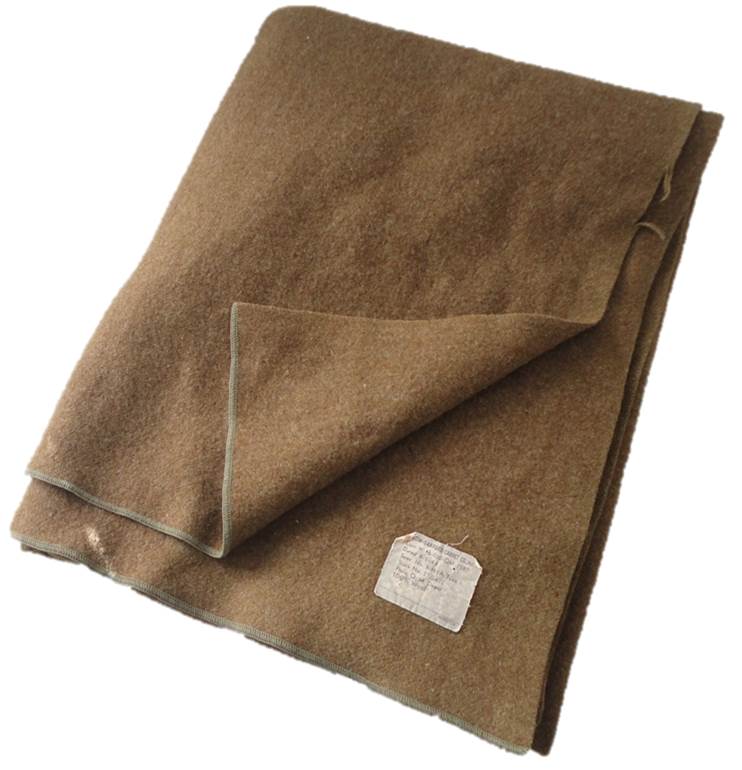
US army wool blanket, dated 1944.
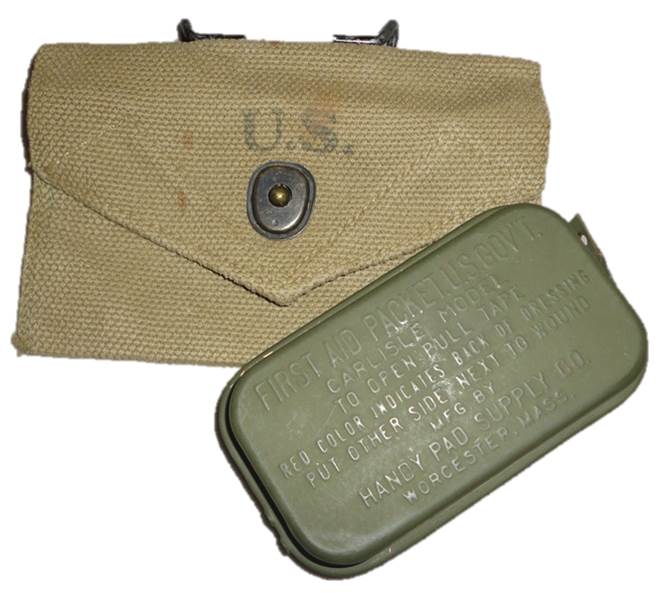
First aid tin and pouch, as carried on the belt.
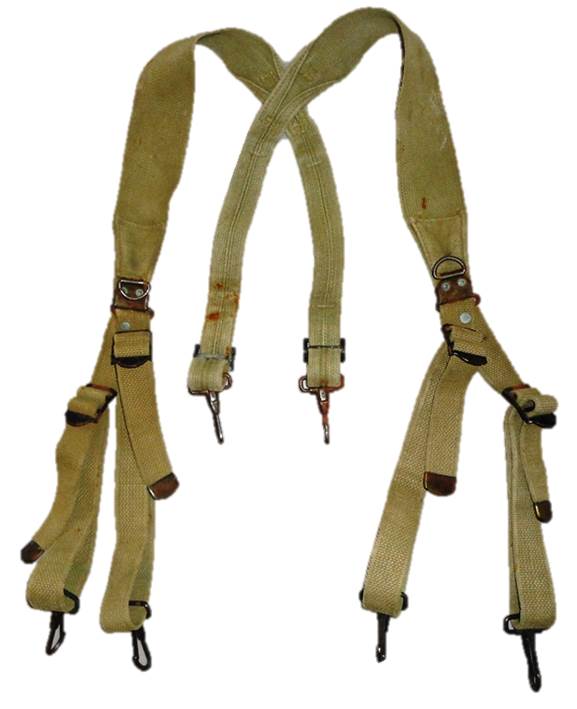
Model 1936 combat suspenders. These were worn to support the cartridge belt when a pack was not worn.
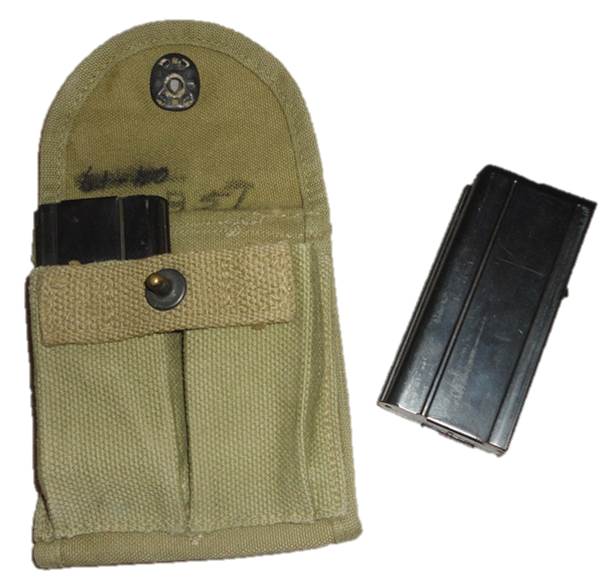
Pouch and magazines for the .30 caliber M1 carbine.
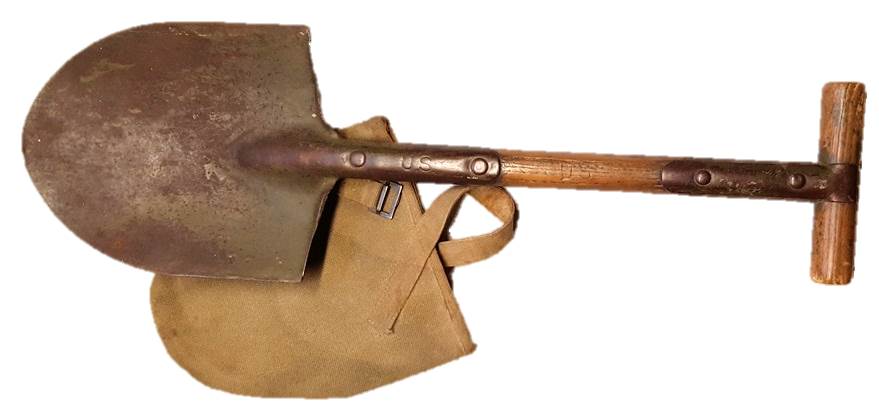
M1910 Intrenching Tool, the T-handle shovel with cover. Each combat soldier was issued with this tool in both WWI and WWII. These were later replaced by the M1943 shovel, which could be folded in different positions.

Oilcloth "Invasion" armband worn by US forces--often airborne--for landings to identify them as Americans. This version was worn for the attacks at Normandy, Holland, and the Rhine.
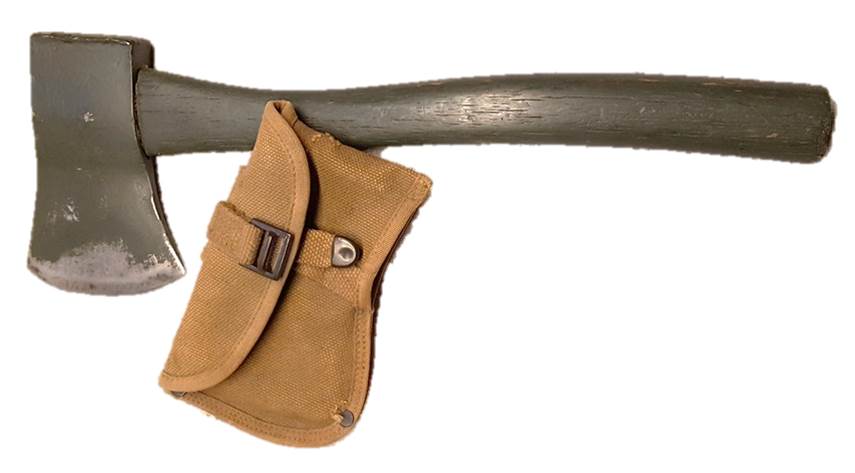
M1910 Hand Axe and WWI-dated cover.
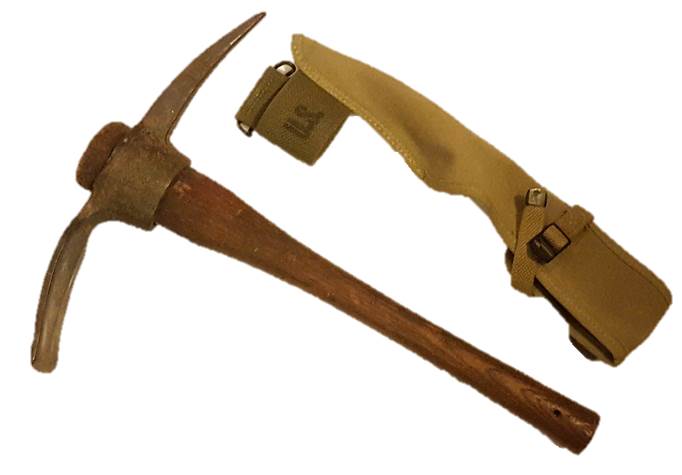

Pickaxe and carrier.
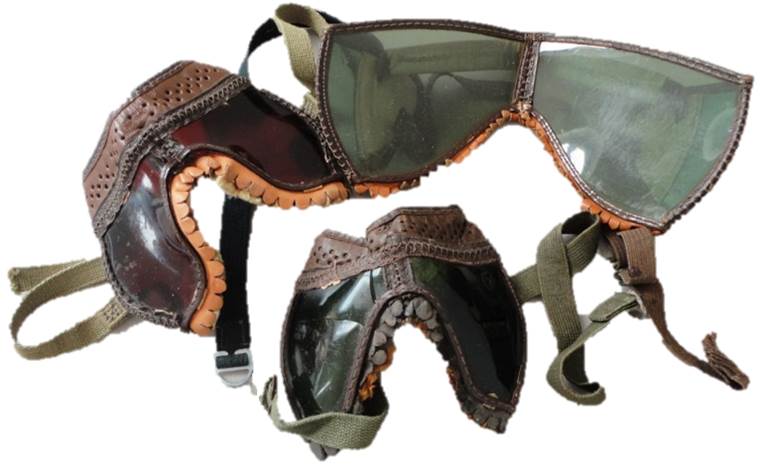
Various disposable goggles. They could be worn for sun, sand, water, snow, and wind protection. Colored lenses were used to prepare for night vision or to better see tracer bullets.
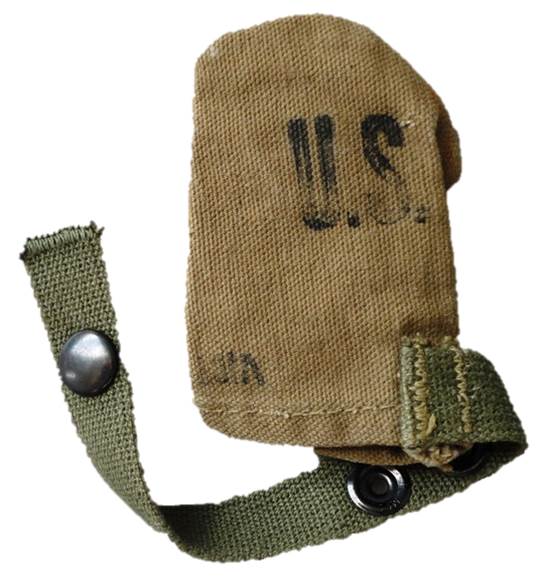
Protective muzzle cover for the M1 Garand and M1 carbine.
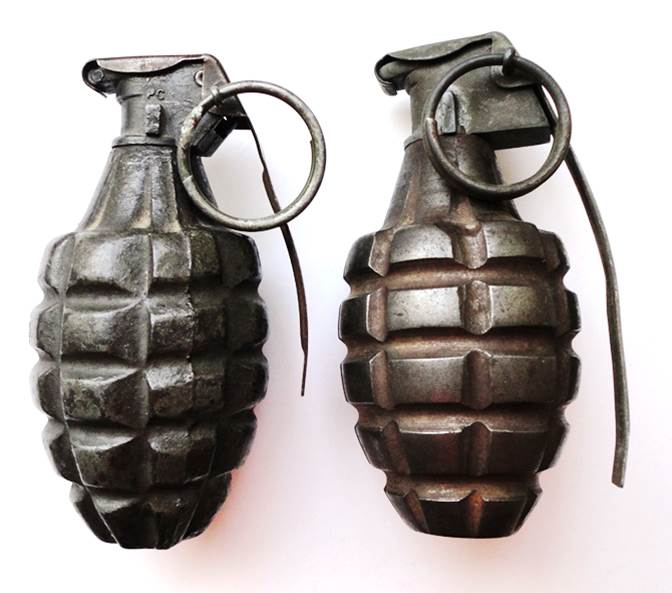
Early and mid-war WWII "Pineapple" fragmentation grenades.
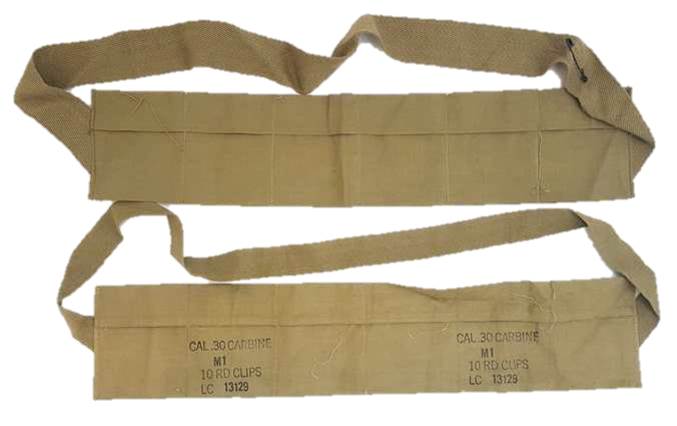
Ammunition bandoleers for the M1 Garand and M1 carbine.
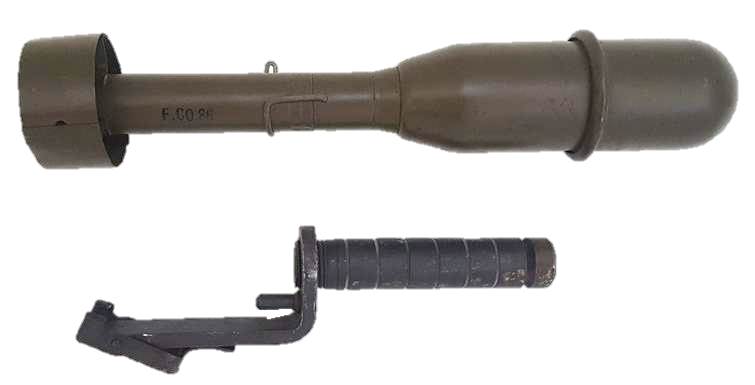
Rifle grenade and launcher for the M1 Garand
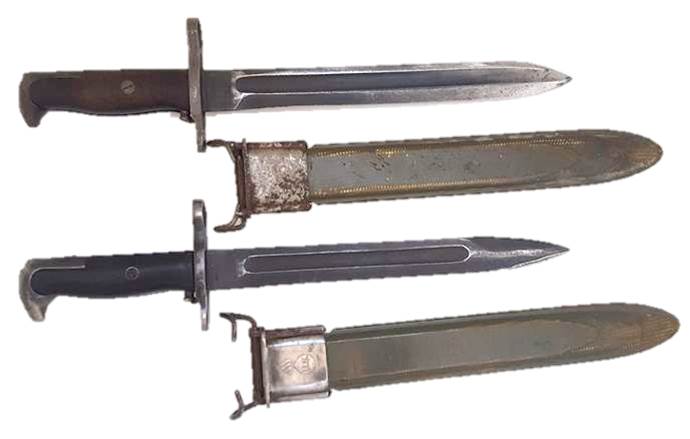
10" bayonets, the standard US bayonet of WWII. These fit both Springfield and Garand rifles. Originally carried over from WWI with a 16" blade, they were shortened in 1943 to 10". The top version is a "cut-down" variation, while the bottom is a post-1943 standard production model. These were issued with fiberglass sheaths.

A reissued WWI bayonet, updated with brown plastic grips and issued through 1943, at which time regulations shortened bayonets to 10" blades.
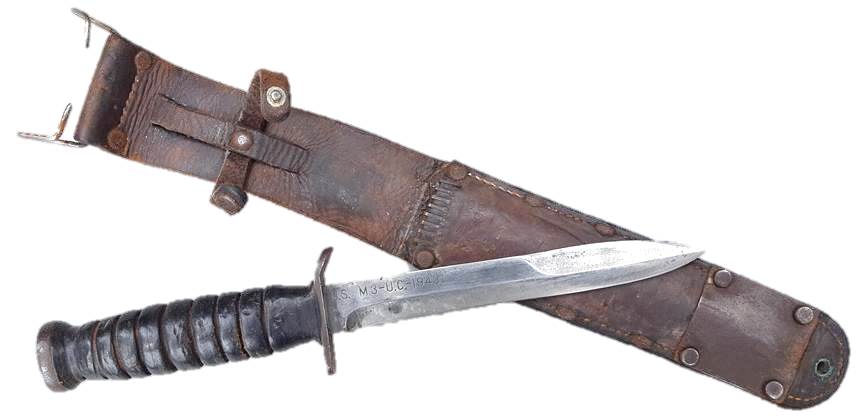
The M3 knife was issued as a fighting knife beginning in late 1943. This is one of the first examples made, dated 1943 on the blade. It was issued with a M6 leather sheath.
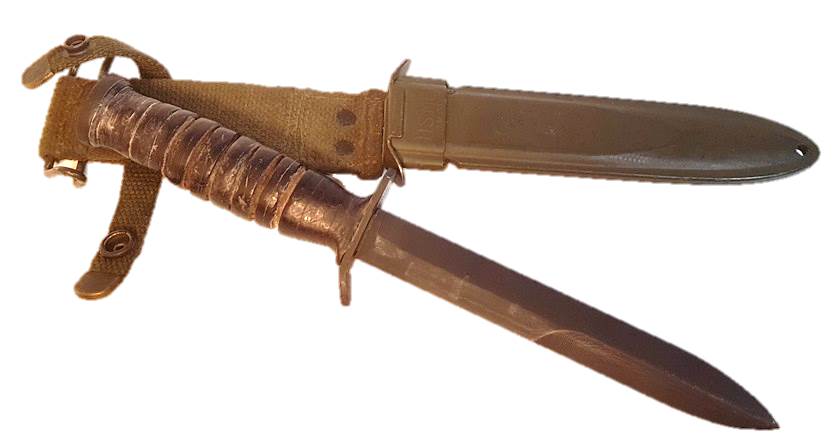
This later version M3 knift moved the markings to the cross guard and dispensed with the 1943 date. The leather sheath and was replaced with a more durable plastic version.
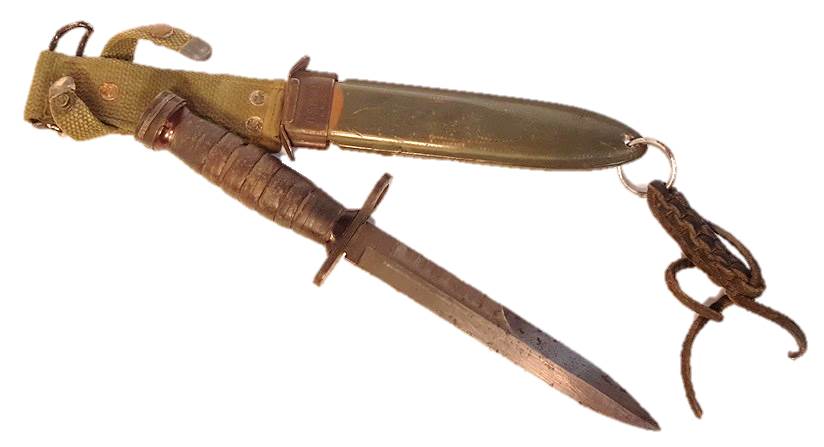
Bayonet and sheath for the M1 carbine. This was based on the design for the M3 fighting knife.
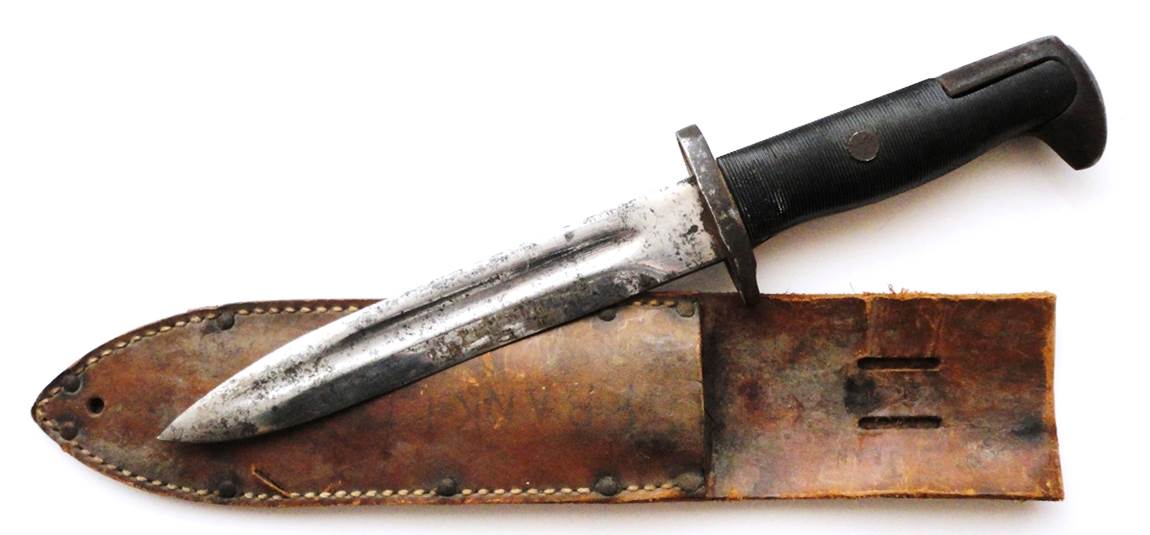
A fighting knife made from a cut-down M1 bayonet. This was carried by a soldier from Waukegan, Illinois.

PAL RH-36 knife, popularly purchased by soldiers for use in the field.
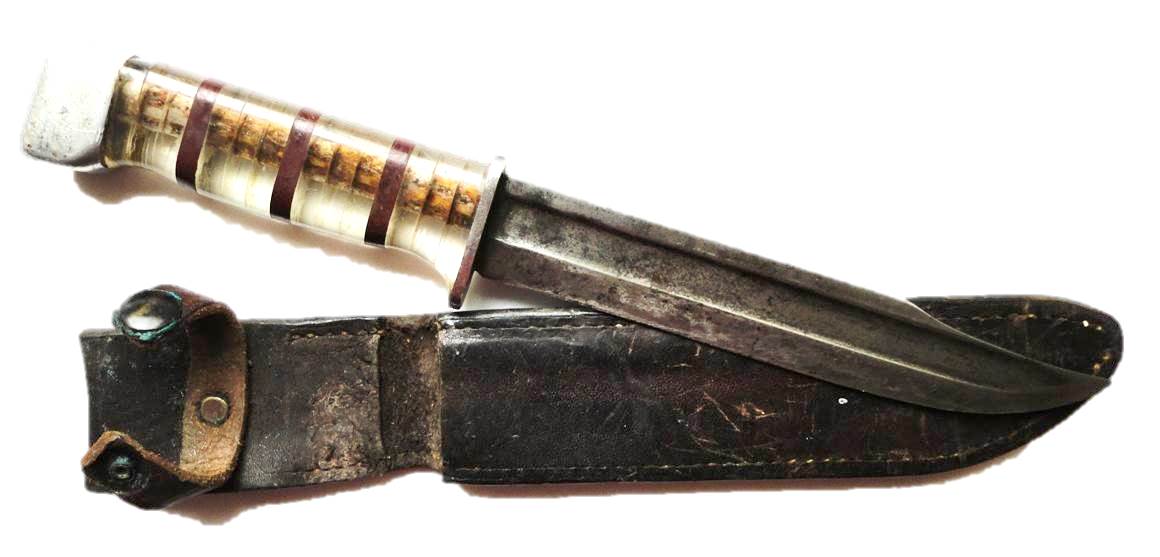
Theater-made fighting knife. This example is made from a cut-down British bayonet and a handle crafted from the
plexiglass of an aircraft cockpit.
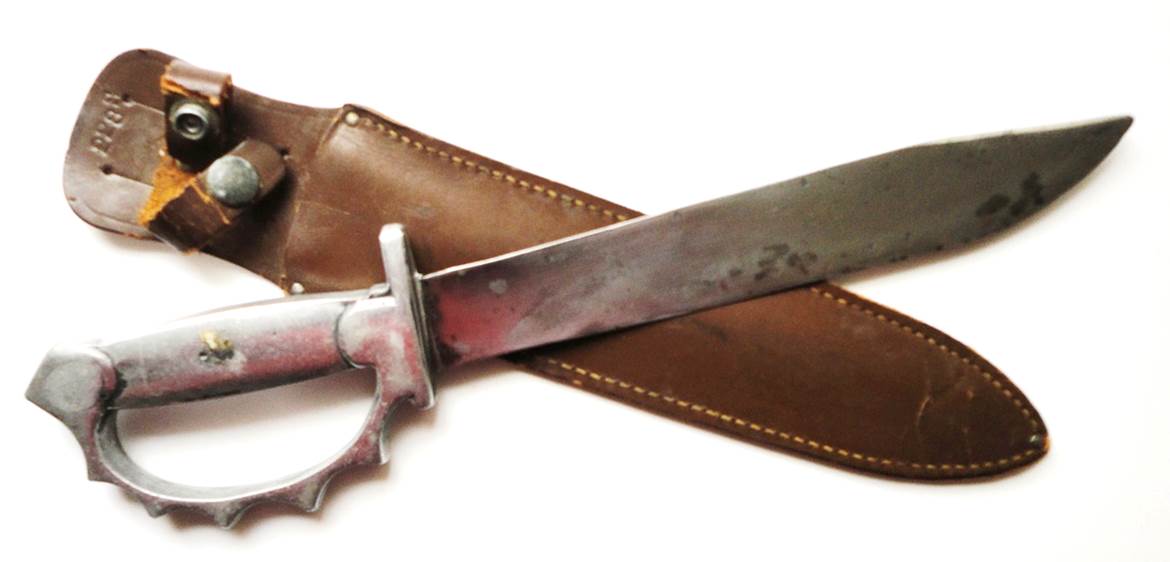
Massive theater-made knife, likely made in a ship workshop from scrap aluminum.
The handle features a pointed bow for greater effect and protection.

A 1902 Krag bayonet that was cut down for use as a fighting knife
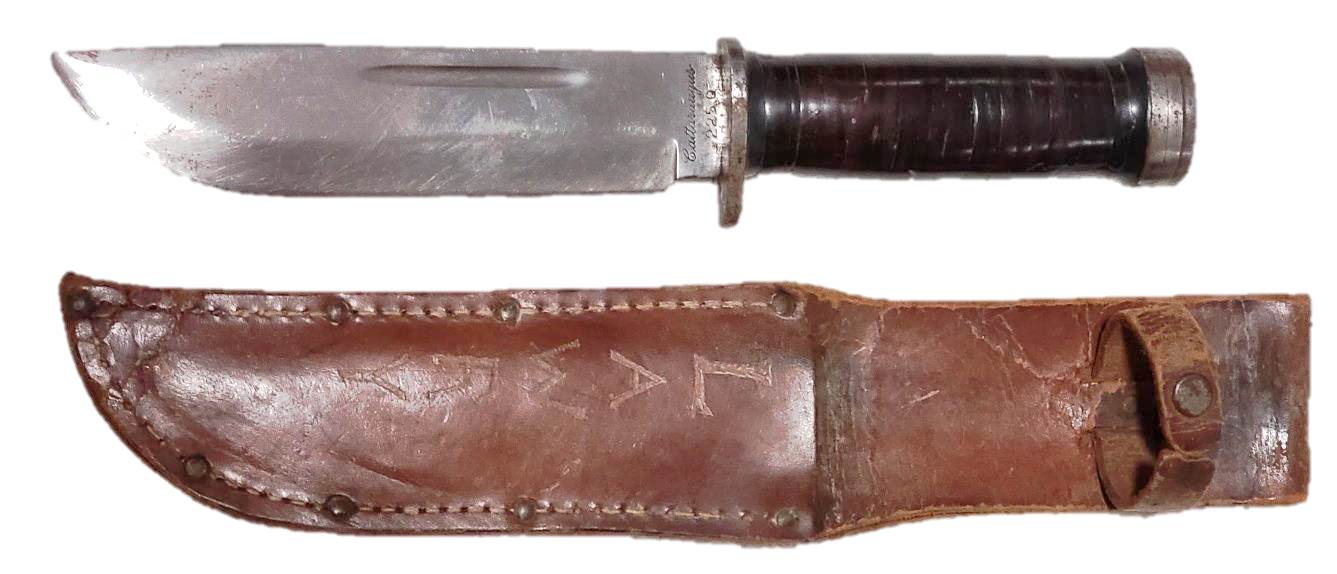
Cattaraugus 225Q utility knife, with a personalized scabbard
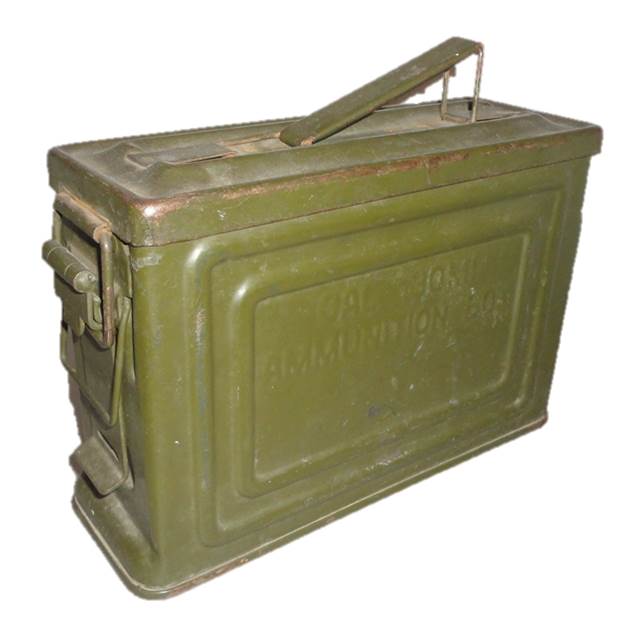
Ammo can for .30 caliber machine gun ammunition.
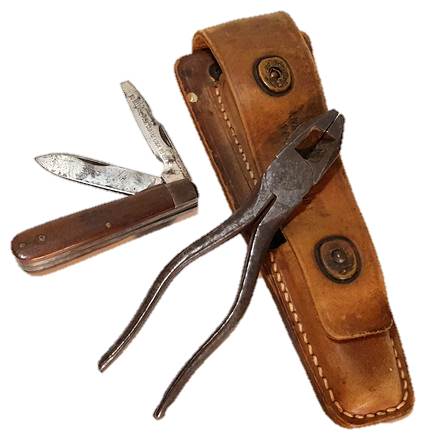
Linesman's tool set. It features the TL-29 pocket knife and pliers.
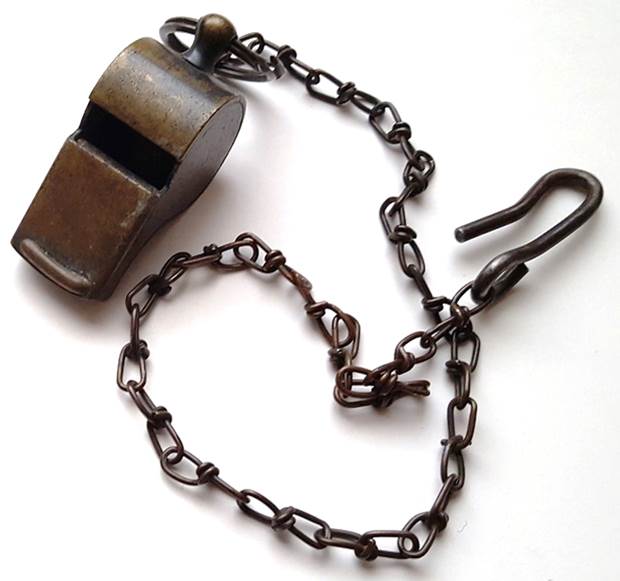
Brass whistle and chain, popular with Military Policemen.
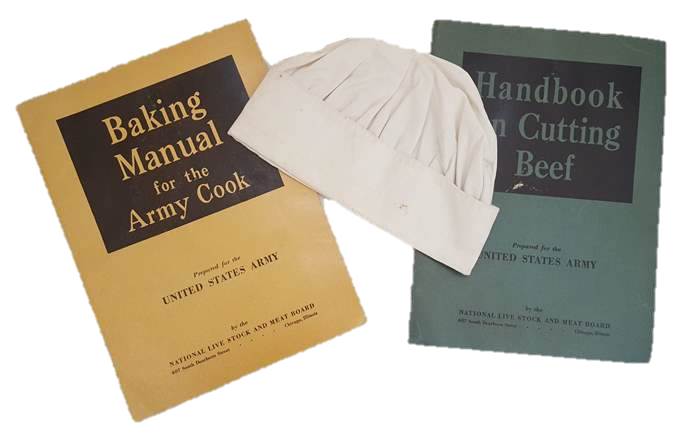
Perhaps the most important elements of field gear related to food! Here are Army manuals for food production, as well as a WWII cook's cap.
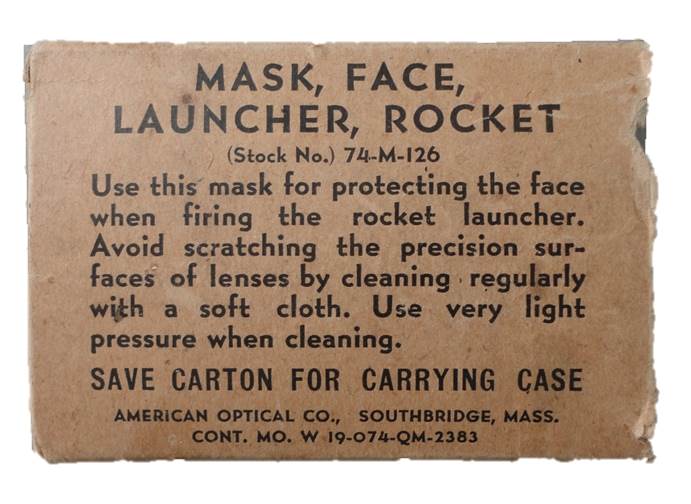
Box containing a protective face mask for soldiers using a bazooka. The protected the wearer from the heat of the rocket blast.
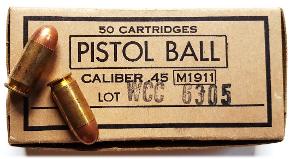
Box of 1942-dated .45 ammunition.
Each box contained 50 bullets.
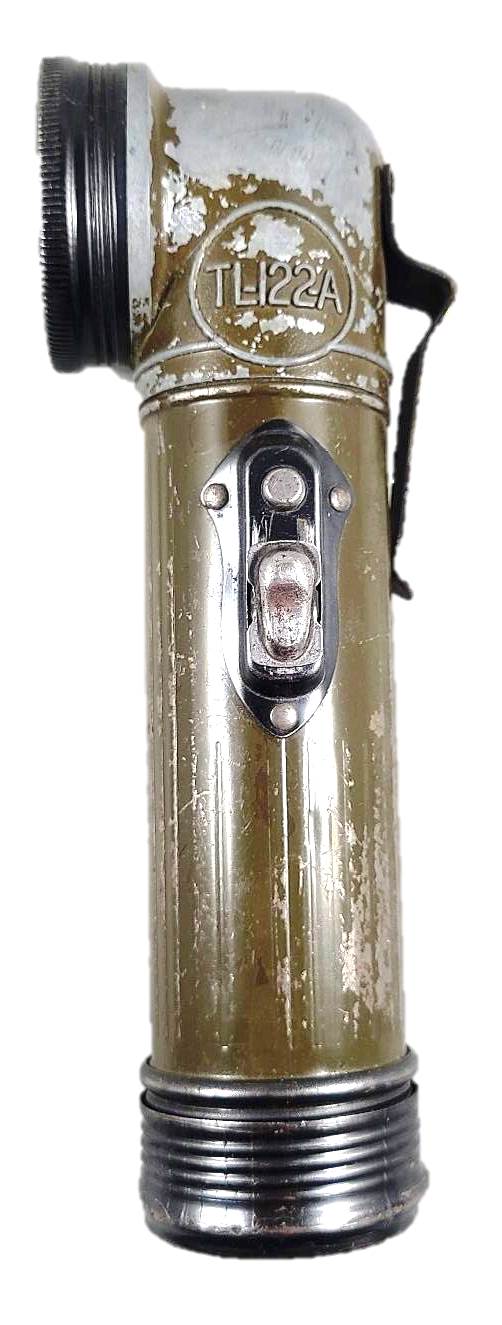
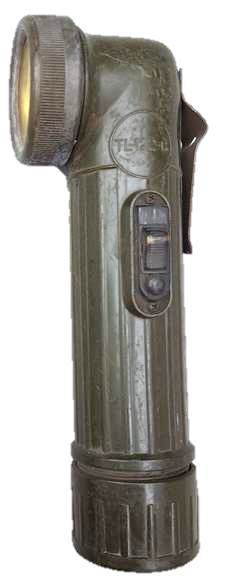
TL-122A and TL-122-B flashlights. These could have interchangeable lenses, clip to gear, and stand on their own. These were originally produced in metal, but later versions utilized plastic and were found to be more robust.

M1 Dust Respirator, as used by tank and vehicle crews in dusty climates
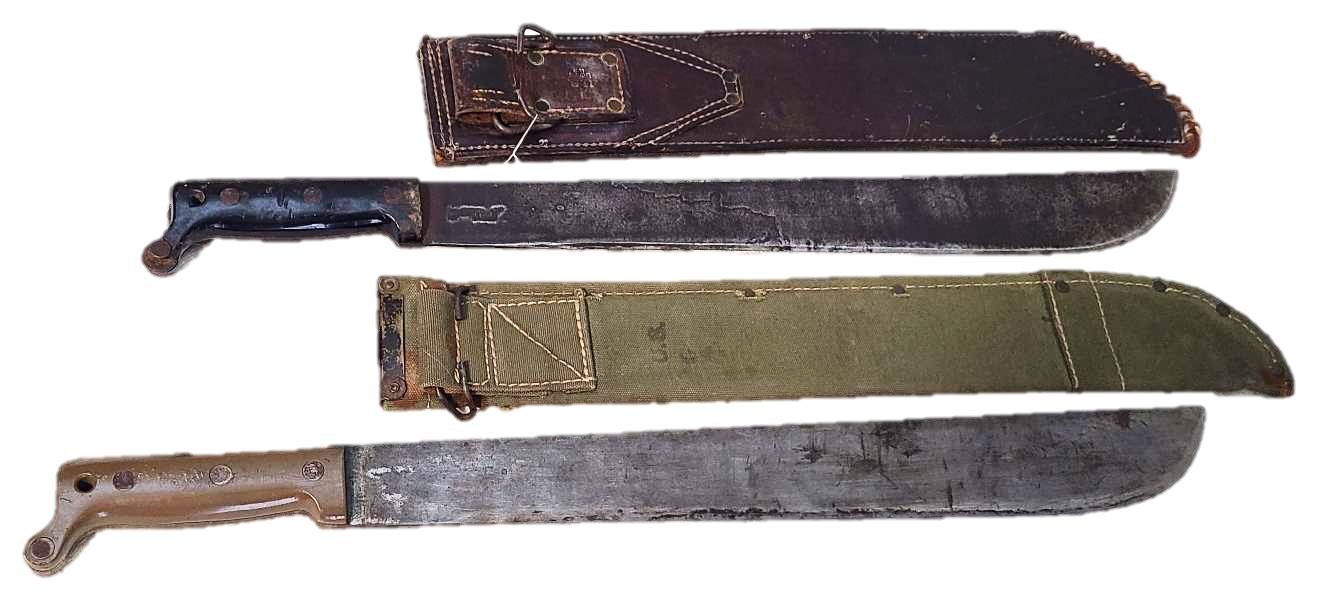
A pair of machetes, with both leather and canvas sheaths
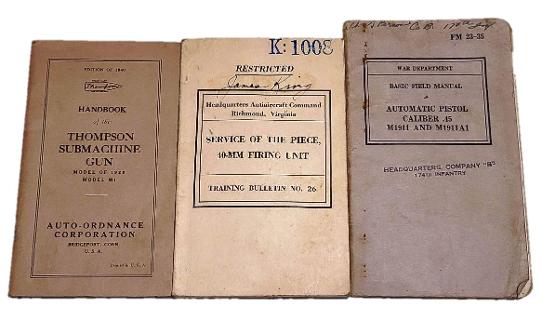
Weapons manuals for the Thompson submachine gun, the 40mm cannon, and M1911A1 pistol